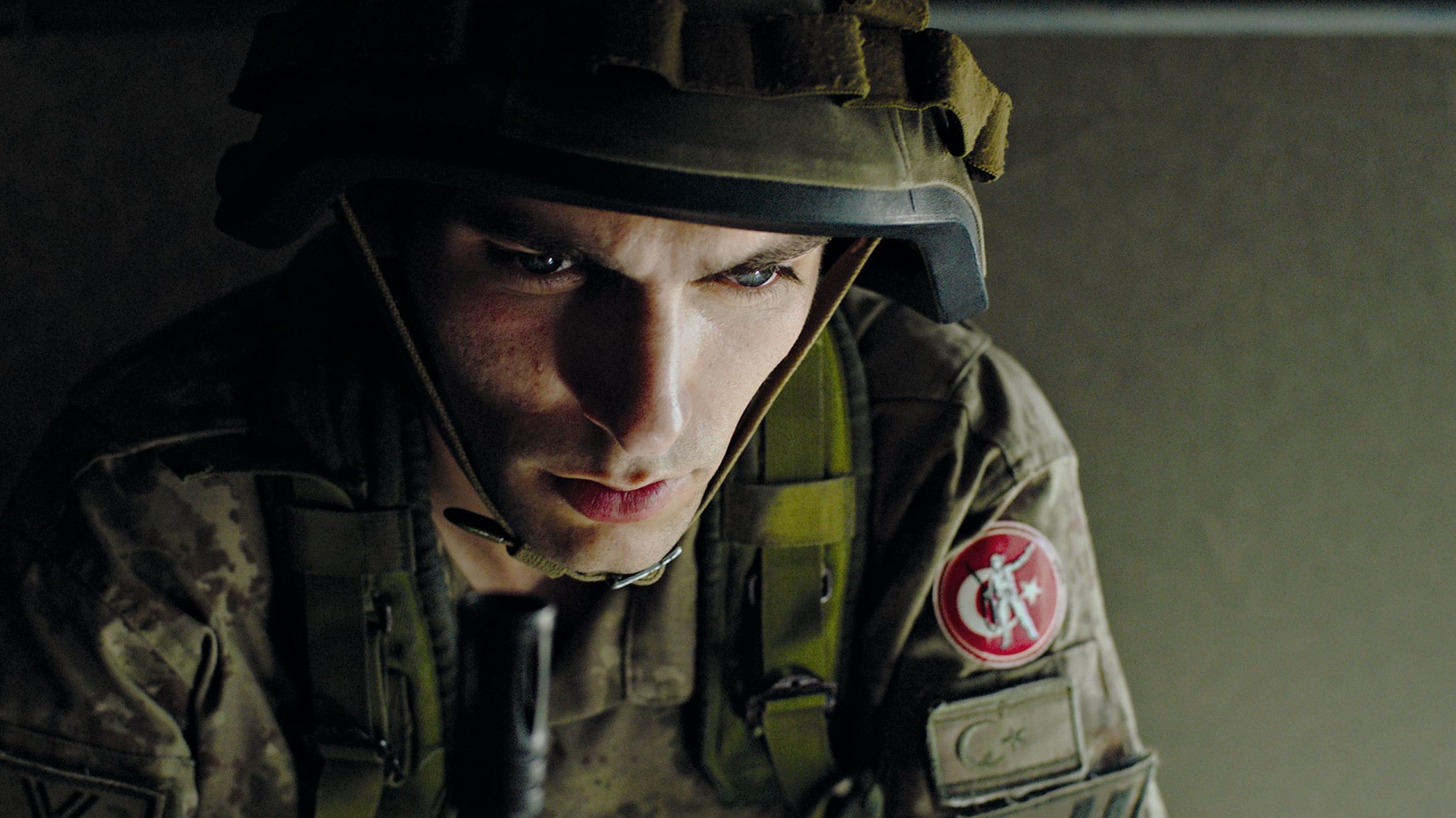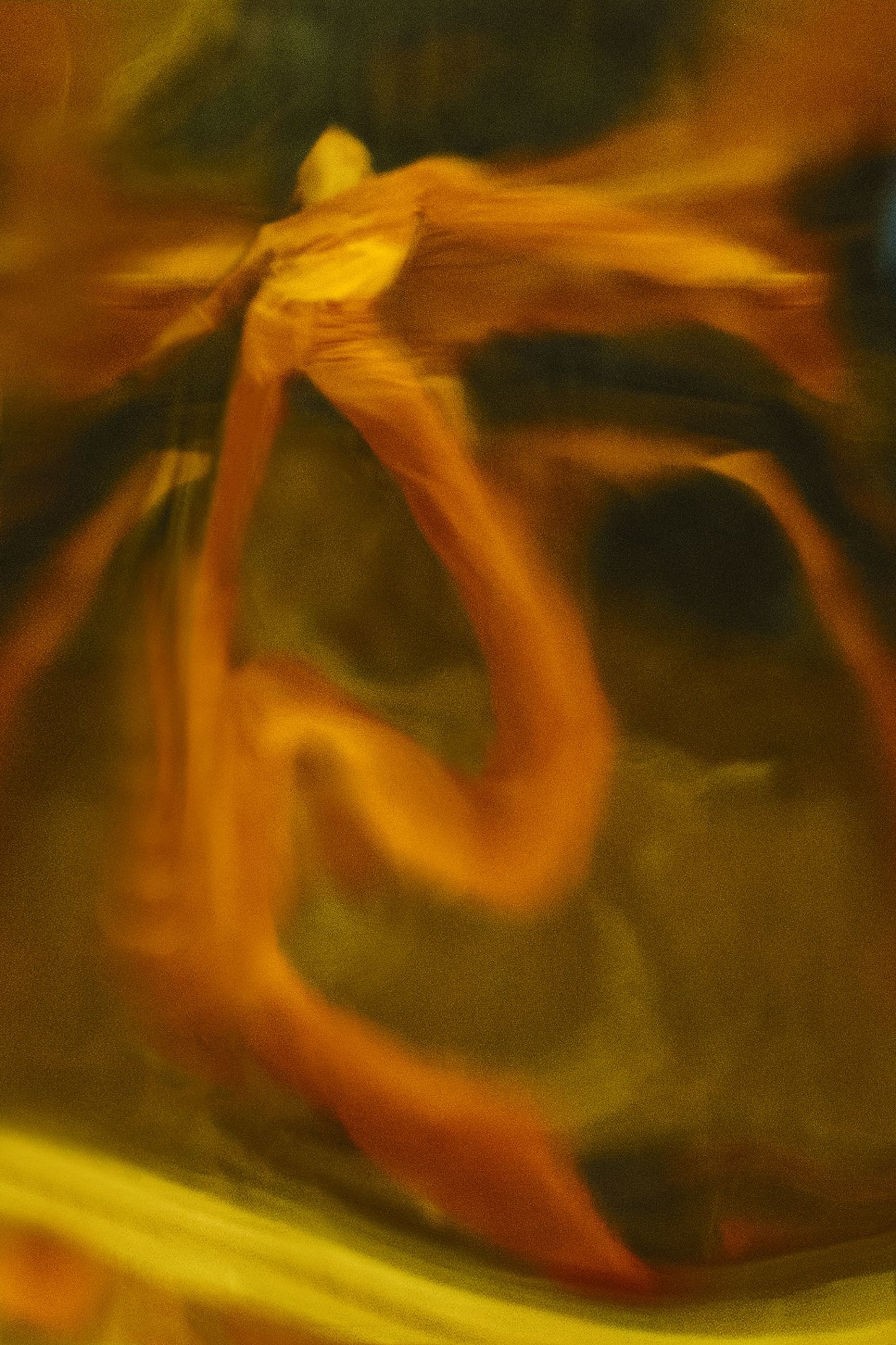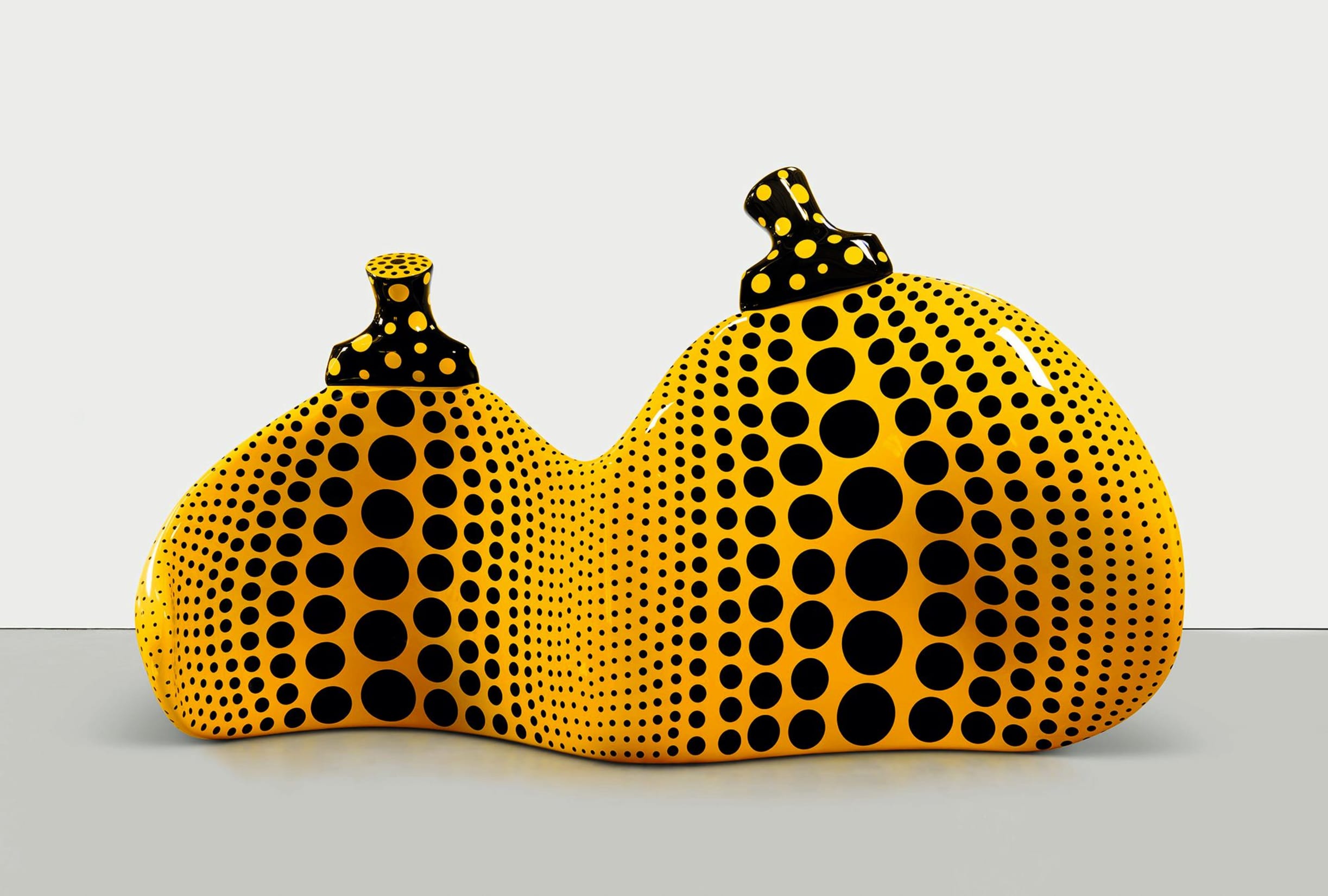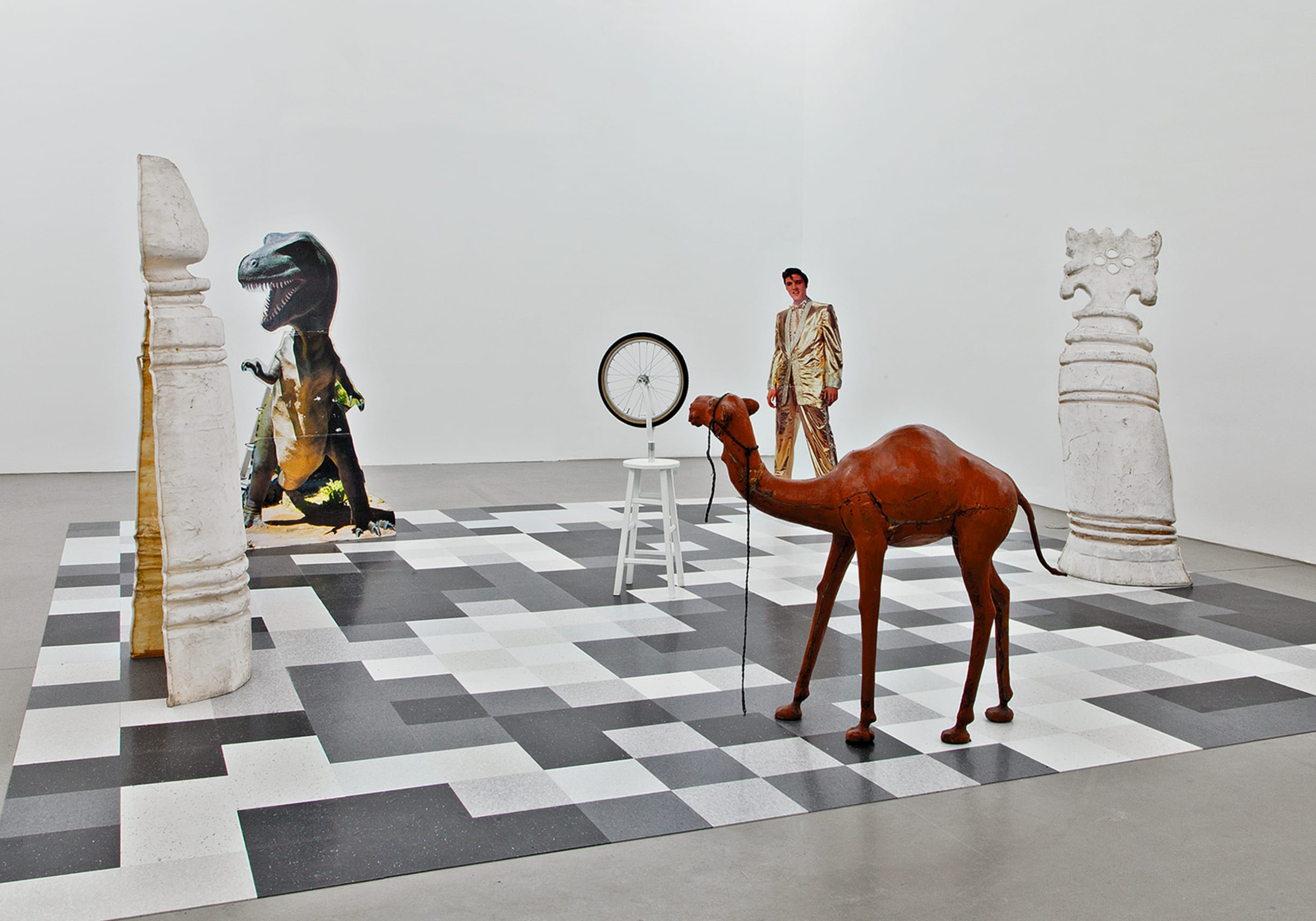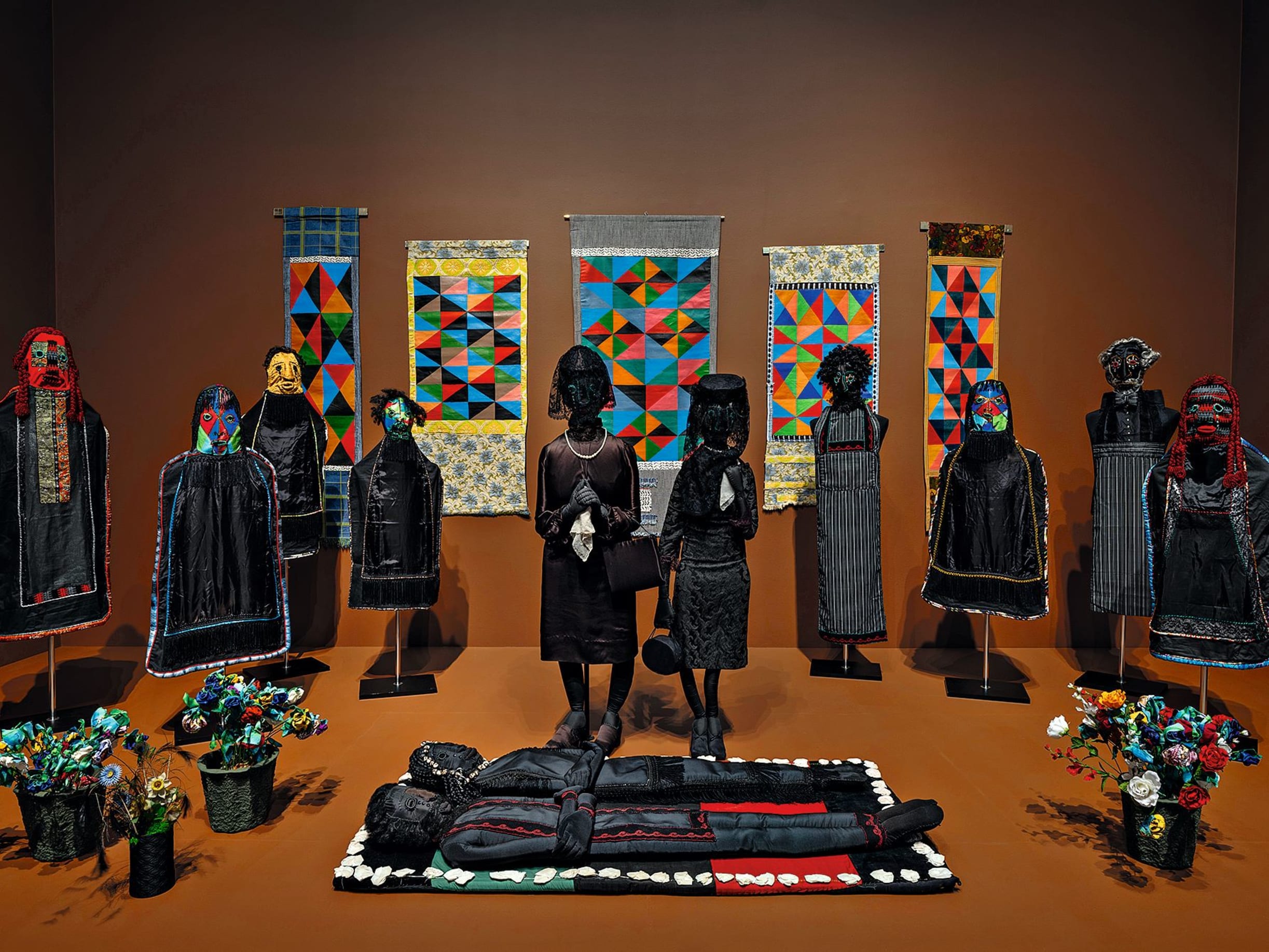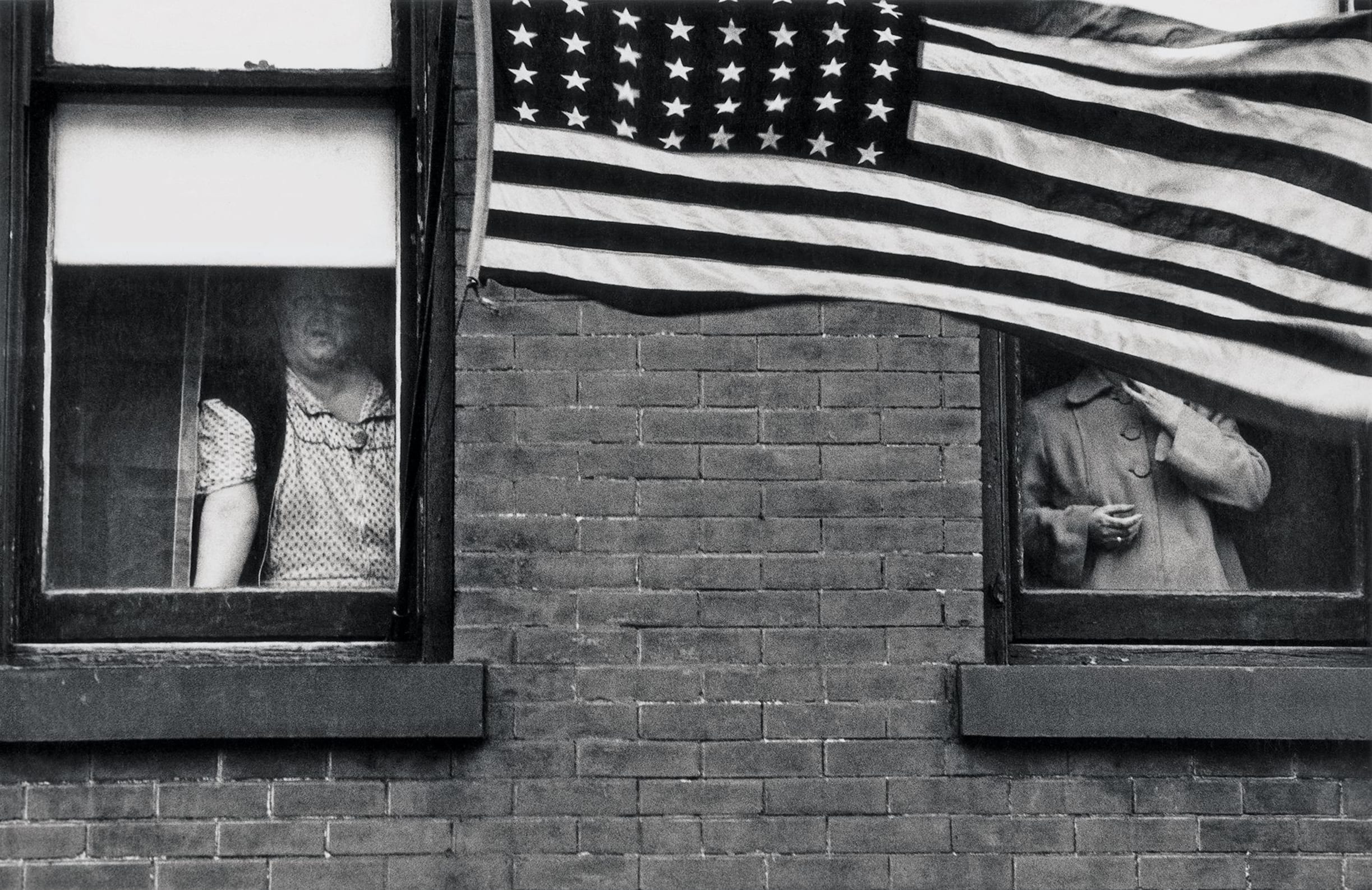Art Basel unveils further highlights for its 2024 edition, including full details of its expanded city-wide program featuring Parcours, the Merian, Film, Conversations, and the Messeplatz project
- Parcours, curated for the first time by Stefanie Hessler, Director of Swiss Institute (SI) in New York, will showcase more than 20 site-specific public art installations along Clarastrasse, which connects the fairgrounds to the Rhine.
- The Messeplatz will host a major work by conceptual artist Agnes Denes, curated by Samuel Leuenberger, Founder of SALTS.
- Unlimited, curated by Giovanni Carmine, Director of Kunst Halle Sankt Gallen, will present 70 large-scale installations by distinguished and emerging artists.
- Kabinett, Art Basel’s sector for thematic presentations within galleries’ main booths, will showcase 22 projects presented by 23 galleries.
- Celebrating its 20th anniversary, Conversations, curated for the first time by Kimberly Bradley, will bring together over 25 thought leaders across 11 panels, focusing on the issues shaping contemporary culture.
- Presenting a week of extraordinary cinema and celebrating its 25th edition, the Film program, curated by Filipa Ramos, will feature artists’ surveys, feature films, and a special program for young audiences, from age four onwards.
- Art Basel, whose Global Lead Partner is UBS, will take place at Messe Basel from June 13 to 16, 2024, with Preview Days on June 11 and 12.
The 2024 edition of Art Basel in Basel will feature 285 of the world’s leading galleries, showcasing the highest quality of works across all media, including painting, sculpture,
photography, and digital artworks. 22 first-time participants will join a robust lineup of European exhibitors and returning galleries from around the globe.
In addition to remarkable presentations in its Galleries, Feature, Statements, and Edition sectors, around 70 large-scale installations and performances will be on view in the show’s Unlimited sector, while the Kabinett sector will return for the second time to Art Basel’s Swiss edition to spotlight distinct, curated exhibitions within the main booths of exhibitors.
This year’s show will also present an expanded city-wide program, which will include Agnes Denes’ seminal land art work Honouring Wheatfield – A Confrontation (2024) on the Messeplatz, curated by Samuel Leuenberger. The reconceptualized Parcours sector, curated for the first time by Stefanie Hessler, will unfold along Clarastrasse up to the Middle Bridge, where Art Basel will activate the Merian to provide audiences with a stimulating venue for around-the-clock artistic events and showcases. Free to the public, Art Basel’s Conversations series, curated for the first time by Kimberly Bradley, will focus on ways to build and shape the art world’s future, while the Film program, curated by Filipa Ramos, will showcase a unique lineup of surveys, feature films, and a special program for young audiences from age four onwards.
Maike Cruse, Director of Art Basel in Basel, said: ‘I am particularly excited about this year’s expanded city-wide program as a testament to Basel’s cultural pulse. The Messeplatz project, featuring Agnes Denes’ transformative installation Honouring Wheatfield – A Confrontation (2024), redefines the dialogue between environment, land art, and the value of things. Our Parcours sector transforms the Clarastrasse into an exhibition exploring the topics of circulation and transformation. And the Merian will not only showcase Petrit Halilaj’s installation on the façade but will also extend Art Basel’s activation into the evening and night. Join us to celebrate community and the limitless possibilities of artistic expression along the Rhine.’
Unlimited
Art Basel’s unique sector for large-scale projects, Unlimited provides exhibitors the opportunity to present monumental installations, colossal sculptures, boundless wall paintings, comprehensive photo series, and expansive video projections. Unlimited will be curated for the fourth time by Giovanni Carmine, Director of Kunst Halle Sankt Gallen.
Highlights from Unlimited include:
- A site-specific installation by Swedish artist Anna Uddenberg, titled Premium Economy (2023-2024), presented by Kraupa-Tuskany Zeidler and Meredith Rosen Gallery
- A reenactment of American artist Faith Ringgold‘s first multimedia performance, titled The Wake and Resurrection of the Bicentennial Negro (1976), presented by Goodman Gallery in collaboration with ACA Galleries
- Untitled (2022), an installation by American artist Henry Taylor, presented by Hauser & Wirth
- Greek Italian artist Jannis Kounellis’ installation Senza titolo (vele) (1993), presented by Kewenig
- An installation of a significant section from American artist Keith Haring’s mural Untitled (FDR NY) #5-22 (1984), presented by Gladstone Gallery and Martos Gallery
- A new video installation titled DOKU The Flow (2024) by Chinese artist Lu Yang, presented by Société
- Chess (2012), a seminal installation by American artist Lutz Bacher, presented by Galerie Buchholz
- ARCHITEKTURTRAUM (2001) by Swiss artist Miriam Cahn, presented by Meyer Riegger and Galerie Jocelyn Wolff
- A complete set of Robert Frank’s The Americans (1954-1957) presented by Pace Gallery and Thomas Zander Art Basel’s Unlimited Night will return on Thursday, June 13, providing visitors the chance to experience the sector alongside special performances during extended opening hours. For the first time, visitors of Unlimited will have the opportunity to vote for their favorite artwork for the whole duration of Art Basel. The Unlimited People’s Pick will then be announced towards the end of the show week. Further details around the prize will follow in due course. For the full list of artists and galleries presenting in Unlimited, please visit artbasel.com/basel/unlimited. Parcours
Curated for the first time by Stefanie Hessler, Director of Swiss Institute (SI) in New York, Art Basel’s public art sector will unfold along Clarastrasse up to the Middle Bridge, connecting the fairgrounds with the Rhine. Hessler’s concept for Parcours is a curated exhibition that meanders through empty stores and operational shops, a hotel, a restaurant, a brewery, and other quotidian spaces on Basel’s Clarastrasse. Through ambitious projects, many of them site-specific and newly produced, the sector explores transformation and circulation in areas such as trade, globalization, and ecology. Hessler takes over Parcours from Samuel Leuenberger, who successfully managed and expanded the sector over the past eight years.
Highlights from Parcours include:
- An architectural structure lined with paintings that houses produce on sale at the Tropical Zone store by London-based artist Alvaro Barrington, presented by Sadie Coles HQ, Thaddaeus Ropac, and Massimodecarlo
- An installation combining traditional Chinese shadow play and digital animation by Swedish artist Lap-See Lam, unfolding in a food court, and presented by Galerie Nordenhake
- A portable garden by Austrian artist Lois Weinberger, transposing nature into an urban context with the aim to attract insects and birds, presented by Galerie Krinzinger
- A performance by London-based artist Mandy El-Sayegh interrogating the circulation of information and goods inside a partially vacant shopping mall, presented by Thaddaeus Ropac and Lehmann Maupin
- A series of pirate flags by Rirkrit Tiravanija, lining the Middle Bridge crossing the Rhine, presented by neugerriemschneider
- Peruvian artist Ximena Garrido-Lecca’s Conversion systems contraposing ancestral techniques and artisanal materials with industrial applications in petrol extraction, installed inside a brewery, presented by Galerie Gisela Capitain Newly the Parcours Night will be hosted on Wedneday, June 12, from 8 to 11pm, offering a festive night filled with live performances and other acts along Clarastrasse and at the Merian. All Parcours locations will have extended opening hours to provide visitors a unique experience. For the full list of artists and galleries featured and further information, visit artbasel.com/basel/parcours.
Messeplatz
The city’s Messeplatz will feature a site-specific presentation by conceptual artist Agnes Denes, curated for the third time by Samuel Leuenberger, founder of the non-profit exhibition spaces SALTS in Birsfelden and Bennwil. Denes’ artistic practice is distinctive in terms of its aesthetics and engagement with socio-political ideas. As a pioneer of environmental, ecological, and land art, she will present the piece Honouring Wheatfield – A Confrontation (2024), referring to her iconic land art work from the 1980s. The work will remain on the Messeplatz throughout the summer until its harvest. Born in 1931 in Budapest, Hungary, raised in Sweden, and educated in the United States, Agnes Denes today lives in New York City.
The Merian
The Merian, situated right at the Middle Bridge along the Rhine in Kleinbasel and across Basel’s Old Town, features a hotel bar, restaurant, and terrace that will host a continuous, around-the-clock program. The façade of the former Café Spitz will be taken over by When The Sun Goes Away We Paint The Sky, an artwork by Petrit Halilaj symbolizing guidance and commemorating the 30th anniversary of the partnership between UBS and Art Basel. Evenings will be curated and enlivened by various members of the global and local arts community including Jenny Schlenzka, Director of Gropius Bau Berlin; Aindrea Emelife, Curator Modern and Contemporary at the Museum of West African Art in Benin City, Nigeria; Pati Hertling, Director of Performance Space New York; Stefanie Hessler, Director of Swiss Institute New York; Benedikt Wyss, Curator of SALTS and Finally Saturday in Basel; and others.
Film
For its 25th edition, the Film program will present a week of extraordinary artists’ cinema
projects. Film is curated by Filipa Ramos, founding curator of the online video platform
Vdrome and lecturer at the Arts Institute of the FHNW in Basel, in collaboration with
Marian Masone, a New York-based independent curator. This year’s program will
address topics such as ecology, intimacy, history, and politics in a series of short film
programs, surveys, and feature films.
The program starts on Wednesday, June 12 with ‘The Political Life of Plants’, a series of
short films by Nefeli Chrysa Avgeris, Zheng Bo, Ulla von Brandenburg, Kyriaki Goni,
and Tiffany Sia. Inspired by the title of two films by Bo, the program looks at how the
vegetal world has been a major figure in recent artists’ cinema. On Saturday, June 15,
‘Bats and Rockets’ will celebrate artists’ films for young audiences, from age four
onwards. This year’s film program will then conclude with Taking Venice (2023), a
documentary about Robert Rauschenberg’s participation in the 1964 Venice Biennale by
Amei Wallach.
For further information, please visit artbasel.com/basel/film. For further information,
please visit artbasel.com/basel/film.
Conversations
Art Basel’s flagship talks program returns for its 20th anniversary edition with an
exciting lineup, curated for the first time by Berlin-based art critic Kimberly Bradley.
Bringing together more than 25 thought leaders, the 2024 edition features 11 focused
panels, all relating to the pressing issue of how to build and shape contemporary
culture’s future. The discussions will explore the art trade’s challenges and opportunities
in a super election year, the potentials of increased interdisciplinarity in museums, how
artists relate to politics in a time of global crisis, and the ways digital technologies are
recasting art’s social and economic ecosystems. Conversations is free and accessible
to all.
Highlights from this year’s Conversations series include:
- Launching the program with a special celebration of 20 years of Conversations,
Hans Ulrich Obrist will speculate on worldbuilding and revisit the notion of
utopia with pioneering digital artists Rebecca Allen and Danielle Braithwaite
Shirley, as well as architect Carlo Ratti.
- Ahead of her Hyundai Commission at Tate Modern’s Turbine Hall, artist Mire Lee
reflects on her practice – which references the art-historical lineage of kinetic
sculpture – in the Premiere Artist Talk.
- Ben Davis, Artnet News’ National Art Critic, will discuss how technology is
blurring the lines of art’s communities and art’s valuation with artist Cecile B.
Evans.
- Legal experts Katalin Andreides and Till Vere-Hodge, along with UBS’s Paul
Donovan, will debate the ways potential political and legal reorientations in an
election year could change how art is bought, sold, and distributed, in a talk
moderated by Georgina Adam.
- The talks will conclude on a light note, with Basel-based artist Sophie Jung and
curator/critic Francesco Bonami discussing the multiple roles humor and satire
play in contemporary art.
- During the show’s final weekend, a curated series of videos of Conversations’
most notable debates, spanning nearly two decades, will be on view in the
Conversations auditorium.
Conversations will take place from June 13 to 16 at the Auditorium in Hall 1. The series is
free to attend. For further information, visit artbasel.com/stories/conversations.
Kabinett
The sector dedicated to curated and thematic presentations featured in a separate
section within galleries’ main booths, Kabinett will present 22 projects by 23 galleries for
the second year.
Highlights from Kabinett include:
- Air de Paris’ presentation of works by American artist Sarah Pucci and her
daughter Dorothy Iannone. The presentation aims to shed light on Pucci’s
mesmerizing objects by contextualizing them within the loving relationship with
her daughter.
- Croy Nielsen’s presentation of paintings by German Japanese artist Ernst Yohji
Jaeger, addressing intimacy and emotion with a moody palette and mysterious
subject matter
- Experimenter’s presentation of Indian artist Kanishka Raja’s Switzerland for
Movie Stars (2014), which plots a speculative Google map journey from Srinagar
to Geneva through a panoramic panel painting and an accompanying brochure
- Catriona Jeffries’ presentation of paintings by Canadian painter Elizabeth
McIntosh, which respond to the ever-shifting workflows of contemporary
industrialization
- Sies + Höke’s presentation of works by German artist Gerhard Richter,
including mirror pieces of various tints and dimensions as well as Richter’s
quintessential stainless-steel spheres.
For the full list of artists and galleries featured and further information, visit
artbasel.com/basel/kabinett.
NOTES TO EDITORS
Giovanni Carmine
Giovanni Carmine is the Director of the Kunst Halle Sankt Gallen, Switzerland and an art
critic based in Zürich and St. Gallen. He curated the Swiss Pavilion at the 55th Venice
Biennale in 2013 and was the artistic coordinator of ILLUMInations, the 54th Venice
Biennale in 2011. He also initiated several independent projects and as a critic, Carmine
has contributed to many notable art publications and catalogs. He was Chair of the Swiss
Federal Art Commission between 2017 and 2019 and in 2001 was awarded the Swiss Art
Award for curatorial excellence.
Stefanie Hessler
Stefanie Hessler is a curator, writer, editor, and the Director of Swiss Institute (SI) in New
York. At SI, Hessler has co-curated solo exhibitions by Ali Cherri, Lap-See Lam, and
Raven Chacon, as well as initiated the curatorial project Spora, which invites artists to
transform the institution through what she calls ‘environmental institutional critique’.
Previously, as the Director of Kunsthall Trondheim in Norway, Hessler co-led the
exhibition ‘Sex Ecologies’ and edited the accompanying compendium on queer
ecologies, sexuality, and care in more-thanhuman worlds (with Seed Box and The MIT
Press, 2021). Selected projects as an independent curator include the 17th MOMENTA
Biennale, ‘Sensing Nature’, Montreal; ‘Joan Jonas: Moving Off the Land II’, Ocean
Space, Venice; the symposium ‘Practices of Attention’, 33rd Bienal de São Paulo; the 6th
Athens Biennale; and ‘Tidalectics’, TBA21– Augarten, Vienna. Hessler is the author of
Prospecting Ocean (The MIT Press, 2019), and has edited over a dozen volumes. She
currently serves on the advisory board of the Institut Valencià d’Art Modern (IVAM), is a
founding committee member of the New York chapter of the Gallery Climate Coalition
(GCC), and forms a part of the On Seeing editorial collective between The MIT Press and
the Brown University Library.
Kimberly Bradley
Kimberly Bradley is a writer, editor, and educator based in Berlin. Her writing has
appeared in The New York Times, ArtReview, and many other publications. Bradley is
co-editor of Navigating the Planetary, a reader on transcultural art, and has lectured at
NYU Berlin and the Salzburg International Summer Academy of Fine Arts. A former
curator and moderator of he talks series at Viennacontemporary, she most recently
moderated public events for Forecast, an international mentorship program.
Agnes Denes
Agnes Denes is recognized as a pioneer artist of environmental, ecological, and land art.
She combines art with science, mathematics, languages and philosophy. An artist of
enormous vision, her work deals with environmental, cultural and social issues that
address the challenges of global survival, and are often monumental in scale. A
conceptual artist and the true pioneer of the ecological art movement, one of her bestknown works is WHEATFIELD—A CONFRONTATION a two-acre wheat field she planted
and harvested downtown Manhattan and other projects since 1958. She has planted
forests of endangered species and fields of grain in megacities on four continents and a
25-year master plan for a 100 km area in the center of Holland. She designed megadunes for New York after super-storm Sandy hit the shores and barrier islands to hold
back the sea in low-lying areas around the world. Agnes Denes has had over 600
exhibitions on four continents and completed public and private commissions in North
and South America, Europe, Australia, and the Middle East. She had three major
retrospectives, written 6 books and holds two honorary doctorates in fine arts from
Rippon Coll. Wisc. and the Humane Letters for contributions to education, art and
pioneering environmental art from Bucknell University, Lewisburg, Pa.
Samuel Leuenberger
Samuel Leuenberger is an independent curator based in Basel. He initiated and runs the
not-for-profit exhibition space SALTS in Birsfelden and Bennwil (Switzerland), which
promotes young Swiss and international artists. In 2014 Leuenberger was the associate
curator of ’14 Rooms,’ a major live art exhibition by Fondation Beyeler, Art Basel, and
Theater Basel. In 2017, he co-organized the Salon Suisse, a collateral program by Pro
Helvetia, supplementing the exhibition at the Swiss Pavilion at the Venice Biennale. In
May 2017 the Canton of Baselland announced Leuenberger the winner of the 2017
Kulturpreis for his work in the field of mediation and curation in the region of Basel. Since
2023, he is the curator of the Globus Art in Public Project in collaboration with Fondation
Beyeler. He has been the curator of Art Basel’s Parcors sector previously, and
successfully managed and expanded the sector over the past eight years. He is now
curating the Messeplatz for the third consecutive time. In addition to curating
internationally, he is working with the Master’s class students at Institut Kunst, Art,
Gender, Nature in Basel.
Filipa Ramos
Filipa Ramos is a Lisbon-born writer and lecturer based in London and the Curator of Art
Basel Film. Her research looks at human engagement with animals in the contexts of art
and artists’ cinema. Her essays and texts have been published in magazines and books
worldwide. With Andrea Lissoni, she founded and curates Vdrome, a programme of
artists’ films screenings. She is Lecturer in the MRes Art course at University of the Arts
London, Central Saint Martins, and the Master’s programme at the Arts Institute of the
Hochschule für Gestaltung und Kunst, Fachhochschule Nordwestschweiz, Basel. She
was Editor-in-Chief of art-agenda, Associate Editor of Manifesta Journal, and contributor
tp dOCUMENTA 13 (2012) and 14 (2017). She edited Animals (Whitechapel Gallery/MIT
Press, 2016) and curated the group exhibition Animalesque (Bildmuseet Umeå, Summer
2019, and BALTIC, Gateshead, Winter 2019/20). She curates the ongoing symposia
series ‘The Shape of a Circle in the Mind of a Fish with Lucia Pietroiusti’ for the
Serpentine Galleries. She is curator of Bestiari, the Catalan Presence at the 2024 Venice
Biennale and is co-curating Songs for the Changing Seasons for the First Climate Biennale in Vienna in 2024
Marian Masone
Marian Masone is a film curator based in New York. For over 25 years Masone was
Associate Director of Programming at the Film Society of Lincoln Center, one of
America’s pre-eminent film organizations, where she sat on the selection committees for
New Directors/New Films, produced with the Museum of Modern Art in New York and
Film at Lincoln Center, and The New York Film Festival. Among her consulting projects,
she works with German Film Services to select and present a yearly program of German
films in New York City and is a consulting producer for Jump Cut Creative in New York.
Masone is on the film panel of the Princess Grace Foundation, awarding fellowships to
young artists, and is a member of Women in Film’s preservation fund. She has been a
guest lecturer and curator for such leading institutions as Parsons School of Design in
New York and Museo Reina Sofia in Madrid.
About Art Basel
Founded in 1970 by gallerists from Basel, Art Basel today stages the world’s premier art
shows for Modern and contemporary art, sited in Basel, Miami Beach, Hong Kong, and
Paris. Defined by its host city and region, each show is unique, which is reflected in its
participating galleries, artworks presented, and the content of parallel programming
produced in collaboration with local institutions for each edition. Art Basel’s engagement
has expanded beyond art fairs through new digital platforms and initiatives such as the
Art Basel and UBS Global Art Market Report. Art Basel’s Global Media Partner is The
Financial Times. For further information, please visit artbasel.com.
Partners
UBS & Contemporary Art
Global Lead Partner of Art Basel, UBS has a long history of supporting contemporary art
and artists. The firm has one of the world’s most important corporate art collections. UBS
seeks to advance the international conversation about the art market through its global
lead partnership with Art Basel, and as co-publisher of the ‘Art Basel and UBS Global Art
Market Report’ and the ‘Art Basel and UBS Survey of Global Collecting’. UBS also
supports some of the world’s most important arts institutions, events and fairs. UBS
provides its clients with insight into the art market, collecting, and legacy planning through
its UBS Collectors Circle and UBS Art Advisory. For more information about UBS’s
commitment to contemporary art, visit ubs.com/art.
Art Basel’s Associate Partners are Audemars Piguet, whose contemporary art
commissioning program, ‘Audemars Piguet Contemporary’, works with artists to support
and develop an unrealized artwork which explores a new direction in their practice; and
NetJets – the world leader in private aviation, partnering with Art Basel to showcase
emerging artists through their lounge activations in Art Basel in Basel, Paris + and Miami
Beach.
Art Basel is also supported globally by BMW, Ruinart, Parley for the Oceans, We Are
Ona, GOAT, and Quintessentially. Local Partners in Basel are Baloise, whose Art Prize is
awarded to up to two artists exhibiting in the Statements sector, Samsung The Frame, La
Prairie,1664 Blanc, Official Partner of the Unlimited Night, Enea Landscape Architecture,
Vitra, and Mövenpick Hotel Basel. For more information, please visit
artbasel.com/partners.
Important Dates for Media
Preview (by invitation only)
Tuesday, June 11 and Wednesday, June 12, 2024
Public opening dates
Thursday, June 13, 2024 – Sunday, June 16, 2024
Press accreditation
Online registration for press accreditation for our show in Basel is now open. For further
information, please visit artbasel.com/accreditation.
Upcoming Art Basel shows
Basel, June 13-16, 2024
Paris+ par Art Basel, October 18-20, 2024
Miami Beach, December 6-8, 2024
Hong Kong, March 28-30, 2025
Media information online
Media information and images can be downloaded directly from artbasel.com/press.
Journalists can subscribe to our media mailings to receive information on Art Basel.
For the latest updates on Art Basel, visit artbasel.com, find us on Facebook at
facebook.com/artbasel, or follow @artbasel on Instagram, Twitter, and WeChat.
Press Contacts
Art Basel, Sarah Degen
[email protected]
PR Representatives for Europe
SUTTON, Joseph Lamb
Tel. +44 77 1566 6041, [email protected]
PR Representatives for France
CLAUDINE COLIN COMMUNICATION, Thomas Lozinski
Tel. +33 1 42 72 60 01, [email protected]
PR Representatives for North and South America, the Middle East, and Africa
FITZ & CO, Yun Lee
Tel. +1 646 589 0920, [email protected]
PR Representatives for Asia
SUTTON, Carol Lo
Tel. +852 2528 0792, [email protected]












